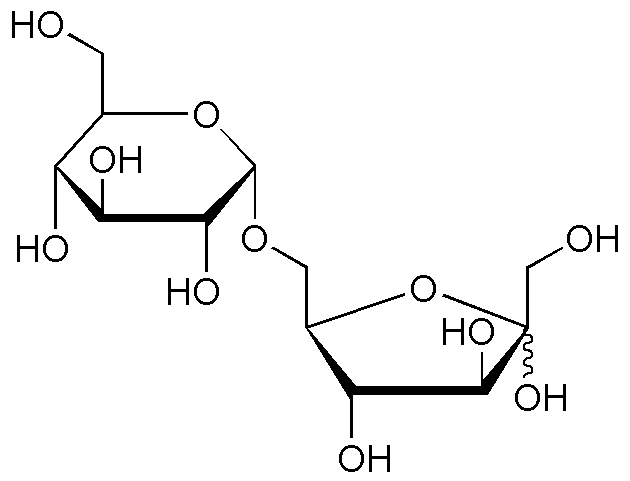Palatinose is widely utilized in research focused on:
- Food Industry: As a low-glycemic sweetener, it is used in various food products, providing a healthier alternative to sugar while maintaining sweetness. This is particularly beneficial for diabetic consumers.
- Sports Nutrition: Its slow-release carbohydrate properties make it ideal for energy drinks and supplements, helping athletes sustain energy levels during prolonged physical activity without the quick spikes associated with regular sugars.
- Pharmaceuticals: Palatinose is incorporated into drug formulations to enhance the stability and bioavailability of active ingredients, making medications more effective.
- Cosmetics: In skincare products, it acts as a humectant, helping to retain moisture and improve skin hydration, which is essential for maintaining healthy skin.
- Animal Feed: It is used in livestock nutrition to improve energy efficiency and overall health, promoting better growth rates and feed conversion ratios.
General Information
Properties
Safety and Regulations
Applications
Palatinose is widely utilized in research focused on:
- Food Industry: As a low-glycemic sweetener, it is used in various food products, providing a healthier alternative to sugar while maintaining sweetness. This is particularly beneficial for diabetic consumers.
- Sports Nutrition: Its slow-release carbohydrate properties make it ideal for energy drinks and supplements, helping athletes sustain energy levels during prolonged physical activity without the quick spikes associated with regular sugars.
- Pharmaceuticals: Palatinose is incorporated into drug formulations to enhance the stability and bioavailability of active ingredients, making medications more effective.
- Cosmetics: In skincare products, it acts as a humectant, helping to retain moisture and improve skin hydration, which is essential for maintaining healthy skin.
- Animal Feed: It is used in livestock nutrition to improve energy efficiency and overall health, promoting better growth rates and feed conversion ratios.
Documents
Safety Data Sheets (SDS)
The SDS provides comprehensive safety information on handling, storage, and disposal of the product.
Product Specification (PS)
The PS provides a comprehensive breakdown of the product’s properties, including chemical composition, physical state, purity, and storage requirements. It also details acceptable quality ranges and the product's intended applications.
Certificates of Analysis (COA)
Search for Certificates of Analysis (COA) by entering the products Lot Number. Lot and Batch Numbers can be found on a product’s label following the words ‘Lot’ or ‘Batch’.
Numéro de catalogue
Numéro de lot/série
Certificates Of Origin (COO)
This COO confirms the country where the product was manufactured, and also details the materials and components used in it and whether it is derived from natural, synthetic, or other specific sources. This certificate may be required for customs, trade, and regulatory compliance.
Numéro de catalogue
Numéro de lot/série
Safety Data Sheets (SDS)
The SDS provides comprehensive safety information on handling, storage, and disposal of the product.
DownloadProduct Specification (PS)
The PS provides a comprehensive breakdown of the product’s properties, including chemical composition, physical state, purity, and storage requirements. It also details acceptable quality ranges and the product's intended applications.
DownloadCertificates of Analysis (COA)
Search for Certificates of Analysis (COA) by entering the products Lot Number. Lot and Batch Numbers can be found on a product’s label following the words ‘Lot’ or ‘Batch’.
Numéro de catalogue
Numéro de lot/série
Certificates Of Origin (COO)
This COO confirms the country where the product was manufactured, and also details the materials and components used in it and whether it is derived from natural, synthetic, or other specific sources. This certificate may be required for customs, trade, and regulatory compliance.


